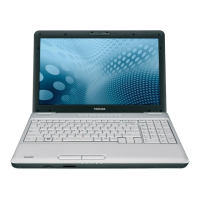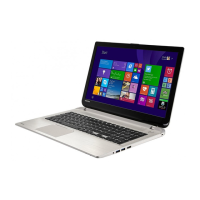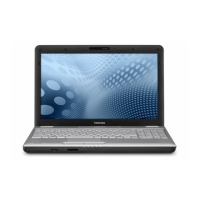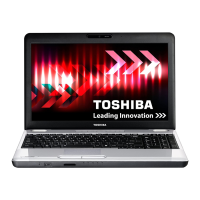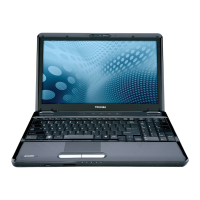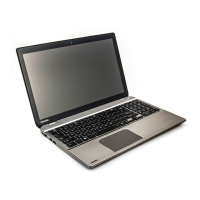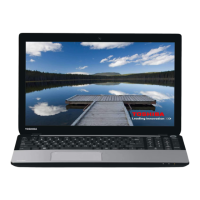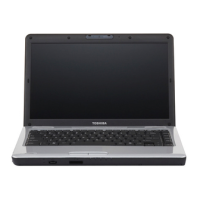
Do you have a question about the Toshiba Satellite L510 Series and is the answer not in the manual?
| Processor | Intel Core 2 Duo |
|---|---|
| RAM | Up to 4GB DDR2 |
| Display | 1366x768 |
| Graphics | Intel GMA 4500MHD |
| Operating System | Windows 7 |
| Optical Drive | DVD SuperMulti |
| Battery | 6-cell Lithium-ion |
| Chipset | Intel GM45 |
| Wireless | 802.11b/g/n Wi-Fi |
| LAN | 10/100 Ethernet |
| Webcam | Integrated Webcam |
| Ports | VGA |
Outlines essential safety precautions for using the computer and AC adapter.
Details compliance statements and conditions for FCC regulations.
Covers CE marking and Canadian digital apparatus compliance.
Provides modem approval and network compatibility statements for various regions.
Details FCC CFR 47 requirements for modem installation and telephone company procedures.
Advises on protecting the computer from heat, stress, and physical damage.
Emphasizes maintaining adequate ventilation and a clean work environment.
Lists essential hardware components included with the computer.
Details pre-installed operating system and software applications.
Covers unique functions like hot keys, power management, and optional accessories.
Identifies ports and controls on the computer's exterior.
Details the display screen, microphone, speakers, and touchpad.
Guides on connecting power, opening the display, and initial startup.
Details methods for recovering the system and creating recovery media.
Explains touchpad usage, gestures, and control buttons for navigation.
Covers loading, removing discs, and writing to CD/DVD media.
Guides on using the web camera, microphone, and face recognition software.
Covers modem setup, region selection, wireless LAN, and Bluetooth functions.
Explains FN key usage for soft keys and hot keys for system control.
Covers the numeric keypad overlay, FN sticky key, and Windows special keys.
Covers battery safety, charging, extending life, and replacement procedures.
Guides on setting and using user and supervisor passwords for secure startup.
Guides on setting, resetting, and deleting user and supervisor passwords.
Explains how to configure the boot order for the computer.
Covers SD/SDHC cards, memory sticks, and installing additional memory.
Details additional batteries, AC adapters, USB FDD, eSATA, monitors, and HDMI.
Outlines steps for identifying and resolving computer issues systematically.
Covers common problems related to system start-up, power, and core hardware components.
Provides solutions for LAN, wireless, Bluetooth, and modem connectivity problems.
Explains CPU performance factors, memory capacity, and battery life details.
Lists operating temperature, humidity, altitude, and power supply details.
Explains how the display controller interprets commands for screen output and video modes.
Describes the modem's data transfer speeds and connection modes (V.90/V.92).
Details form factor, compatibility, OS, and data rates for wireless cards.
Explains radio frequency bands and supported channels for wireless communication.
Lists certification agencies for power cords in different regions worldwide.
Explains the software's role in monitoring system functions and collecting diagnostic data.
Guides on launching, enabling, and using the PC Health Monitor software.
Lists common abbreviations and their meanings found in the manual.
Provides definitions for essential computer hardware, software, and networking terms.

